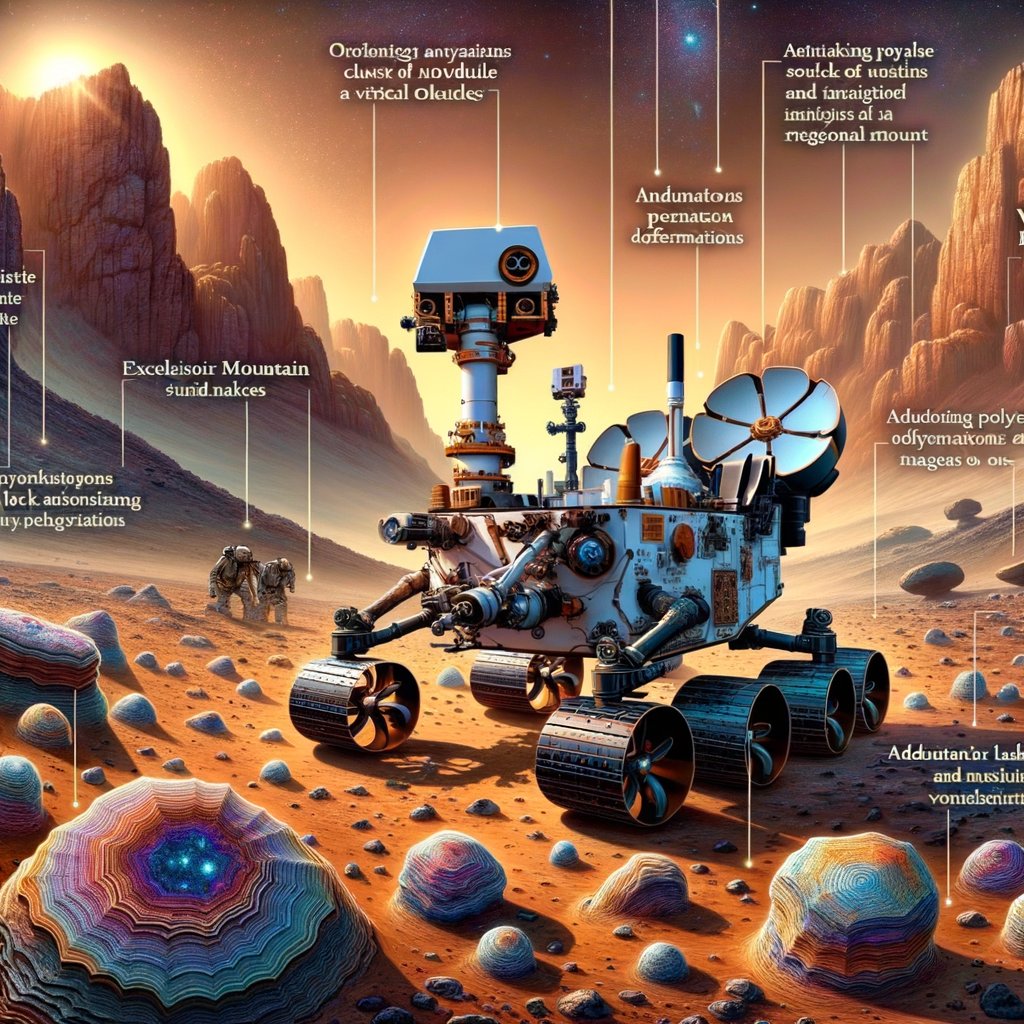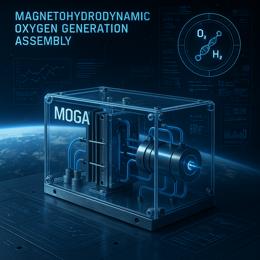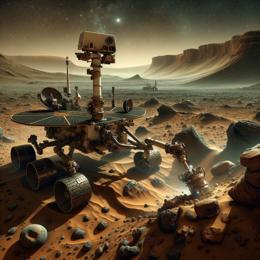Image created by AI
Curiosity Rover's Fruitful Return: In-depth Geological Studies at New Martian Site
The post-holiday period has brought renewed vigor to NASA's Curiosity Rover mission on Mars, as it resumes its exploration with compelling new geological studies. Following a 51 meter journey alongside Texoli Butte, the rover has positioned itself in a novel workspace brimming with intriguing rock formations and sediment structures to scrutinize.
At the heart of Curiosity's current exploration site is “Coronet Lake,” a vertical rock face that showcases a cluster of nodules. Using the Alpha Particle X-ray Spectrometer (APXS) and the Chemistry and Camera (ChemCam) Laser Induced Breakdown Spectroscopy (LIBS), the rover is conducting detailed analyses to uncover the composition of these nodules. Additionally, the Mars Hand Lens Imager (MAHLI) is providing high-resolution images that will enhance our understanding of the textural context of these geological features.
Not far from Coronet Lake, the rover is studying “Excelsior Mountain,” a flat rock face that also caught the team's attention due to its unique attributes. Another point of interest, “Admiration Point,” a peculiar rock possibly originating from Texoli Butte or as a result of meteoritic activity, is under investigation with a combined use of Mastcam mosaics and passive ChemCam observations.
The integrated use of Mastcam and ChemCam is also applied at “Olancha,” where scientists suspect rock deformations that date back to their formation. This area might hold pivotal clues about the geological pressures and environments these rocks have previously endured. Olancha's exploration includes a ChemCam long-distance Remote Micro-Imager (RMI) and Mastcam mosaics, which together are mapping out the area’s structural intricacies.
Further geological storytelling unfolds at "Angels Camp," a site where veins within the rock suggest past water flow. Nearby, "Bare Island Lake" contains eye-catching polygonal ridges on a gray rock background, while a trough feature near Coronet Lake is lined up for extensive imaging.
Adding a layer of depth to the mission, the Curiosity Rover continues to revisit the Gediz Vallis channel with a return look through ChemCam's long-distance RMI, observing transitions between light- and dark-toned rocks. As this phase wraps up with standard environmental observations, Curiosity is set to venture approximately 50 meters further, pushing deeper into the sulfate-rich layers of Mars’ crust.
Backed by a team of Earth-based geologists, this mission phase not only reinvigorates the pursuit of Martian geological history but also spotlights the seamless integration of teamwork and technological prowess in unraveling the mysteries of the Red Planet.










